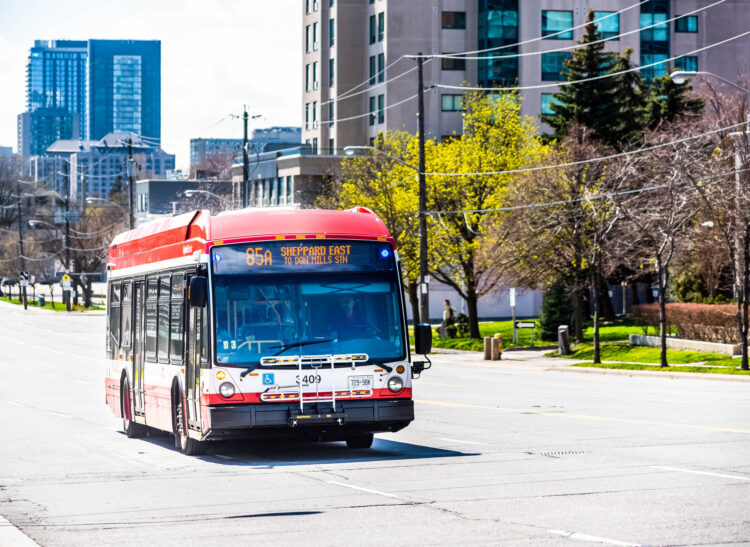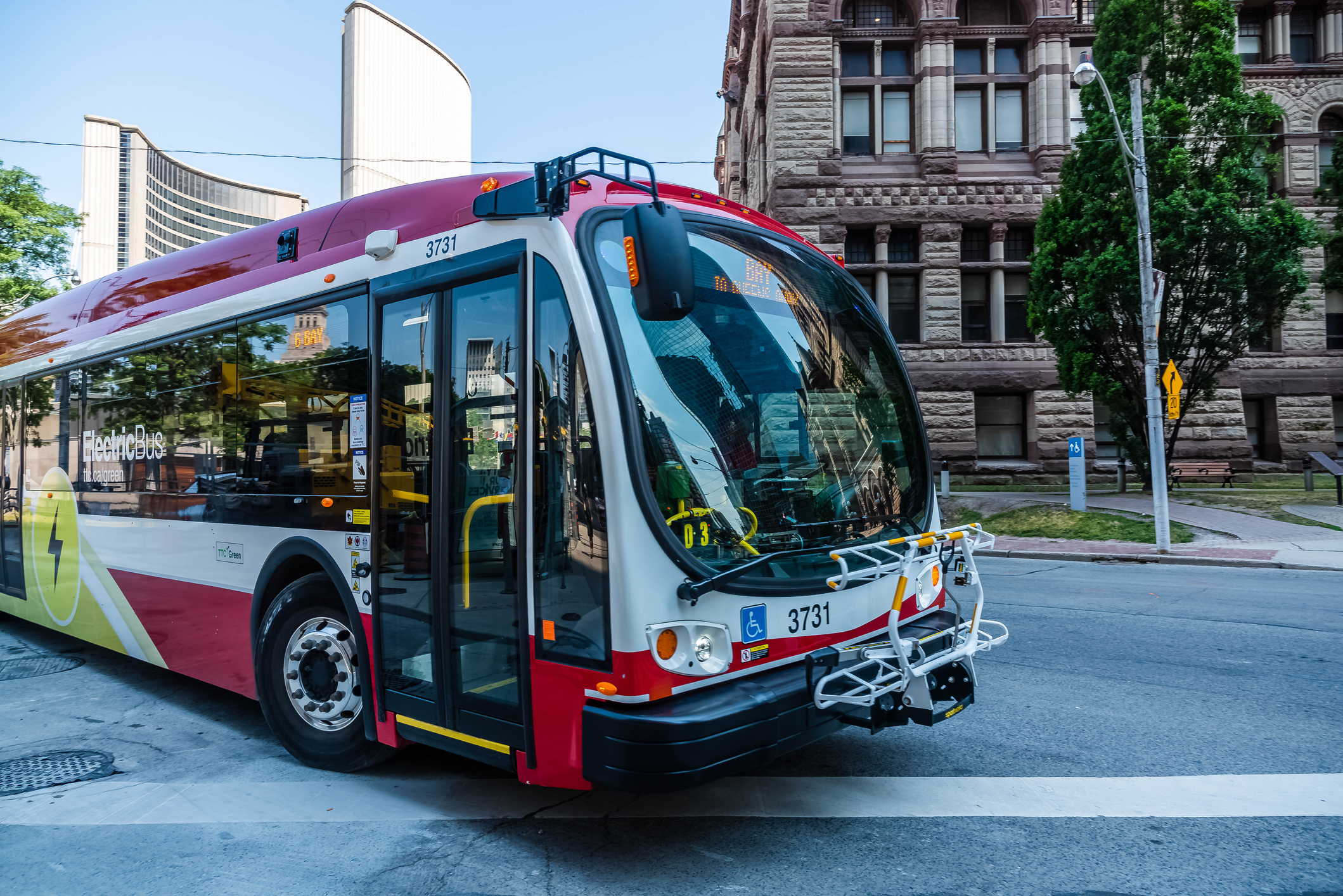Climate change from greenhouse gas emissions is a major threat to human and planetary health.
As transportation is a significant contributing factor to the climate crisis, strategies to cut emissions need measures to improve public transit systems to reduce private vehicle use.
Green infrastructure that contributes to more sustainable travel must also address inequities in access to public systems and the inequitable effects of climate change.
During the pandemic, many people from racialized and low-income groups in Toronto relied on public transit to get to work and other commitments. In response to overall declining ridership and fare revenue during this time, the TTC introduced cuts that brought services below pre-pandemic levels by almost 10 per cent. While these cuts were, in part, rolled back in September 2023, any cuts will have a greater impact on marginalized groups and there remain concerns that poor service and long wait times will continue to contribute to a decline in use of public transit.
Negative environmental conditions, such as air pollution and heat (both causes and effects of climate change) are not experienced equally by all groups. For example, the inner suburbs of Toronto have higher levels of air pollution, resulting in greater exposure for low-income groups living in these areas. Exposure to air pollution can have significant health impacts, such as increased risk of respiratory disease and premature mortality. Since vehicle emissions are a principle cause of air pollution, better access to public transit can contribute to reduced illness and death.
Extreme weather events, such as heat waves, droughts, floods, wildfires and storms, have been increasing in frequency and intensity due to human-caused climate change. The health impacts associated with these events range from respiratory and cardiovascular problems to injuries, negative mental health impacts and an increase in deaths.
Resilience to extreme weather events is dependent on access to resources which are unevenly distributed. Events such as heat waves in the United States and Canada have resulted in highly inequitable health outcomes along social and economic lines, and those experiencing the legacy of colonization and structural racism are often most vulnerable.

The impacts of climate change will also exacerbate pre-existing mental health disparities worldwide. For example, Black and Indigenous communities face greater trauma and mental health risk from the combined effects of adverse weather with structural inequities such as racism and discrimination, economic exclusion and poverty.
Given the reality of human-induced climate change and its health and social impacts, we must prioritize the strengthening of public systems, like transit, as part of a broader strategy to reduce emissions and the inequitable impacts of climate change.
This is even more critical given that Toronto’s population is growing rapidly, and the city is a likely destination for an increasing number of displaced migrants due to events such as droughts, rising temperatures and fires.
It is widely known that transit systems with sufficient investment discourage private vehicle use, however, gaps in TTC funding in 2024 are projected to be $350-$420 million.
The City of Toronto’s Climate Strategy, ‘Net Zero by 2040’, was adopted by City Council in 2021 and includes transitioning to electric buses as a low-carbon strategy. This is an important goal that needs to be made a reality by continued investment into maintaining and strengthening existing service routes, even as we make our way to zero emission bus options.
The federal government has a target to reach Net Zero by 2050 and together, the city and Government of Canada have recently committed $700 million to electric buses. This is an excellent start. However, more immediate funds are needed from all three levels of government to stop inequitable cuts and increase access to public transit throughout Toronto.
Window of opportunity is closing
Transportation is a major source of carbon pollution in Canada and the window of opportunity for action to counter climate change is quickly closing.
The development of green social infrastructure must address the vulnerability of marginalized individuals and communities through inclusion in long-term planning processes that eliminate inequities in access to systems and risk from extreme events.
